
How to Use SERVO: Examples, Pinouts, and Specs
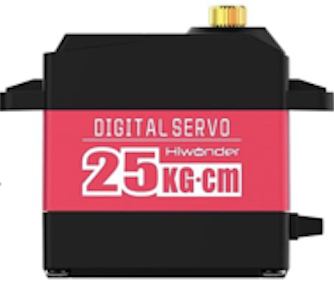
 Design with SERVO in Cirkit Designer
Design with SERVO in Cirkit DesignerIntroduction
A servo is a rotary actuator that allows for precise control of angular position, velocity, and acceleration. It consists of a motor coupled to a sensor for position feedback, along with a control circuit. Servos are widely used in robotics, automation, remote-controlled vehicles, and industrial machinery due to their ability to provide accurate and repeatable motion.
Explore Projects Built with SERVO
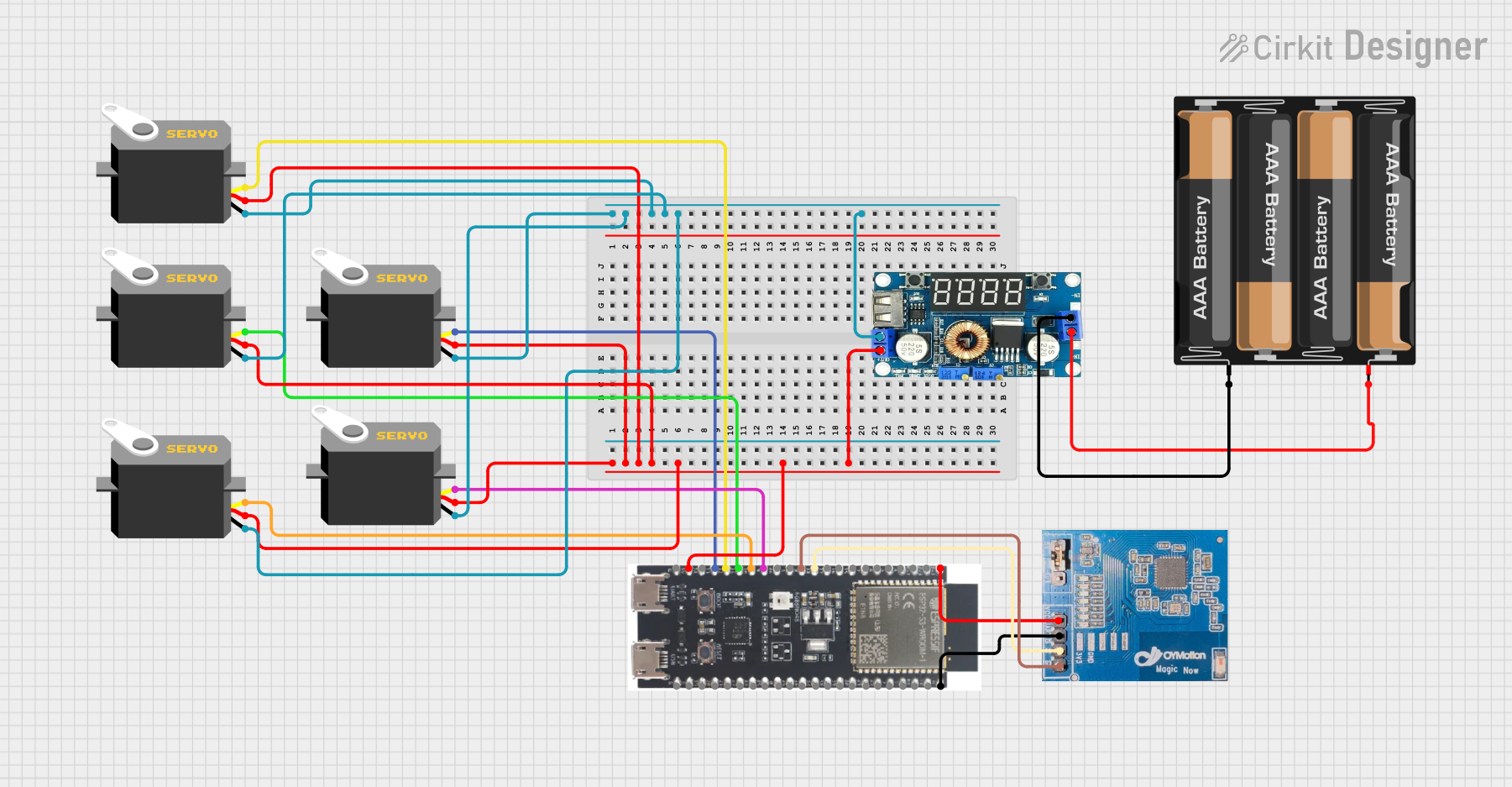
 Open Project in Cirkit Designer
Open Project in Cirkit Designer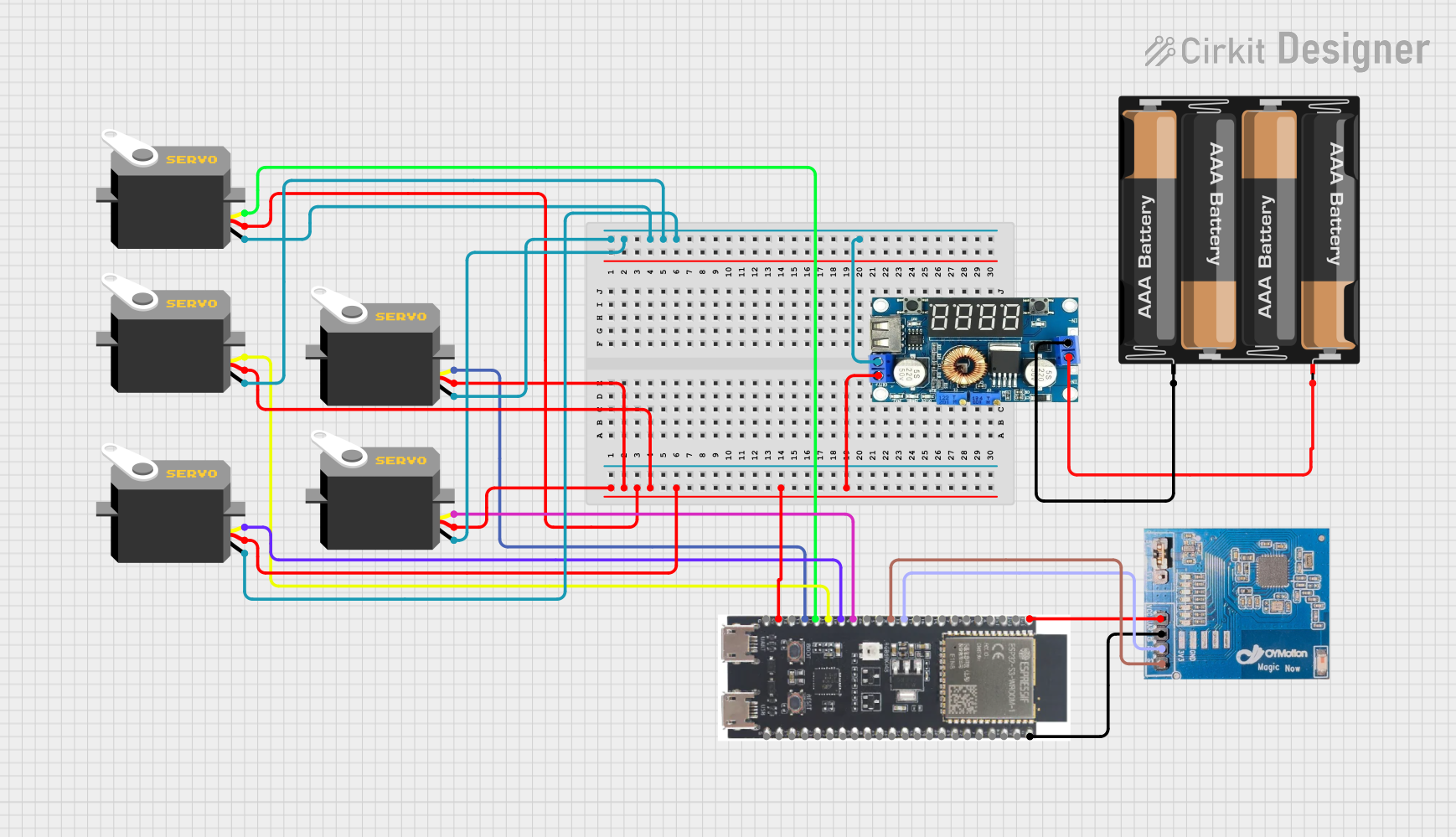
 Open Project in Cirkit Designer
Open Project in Cirkit Designer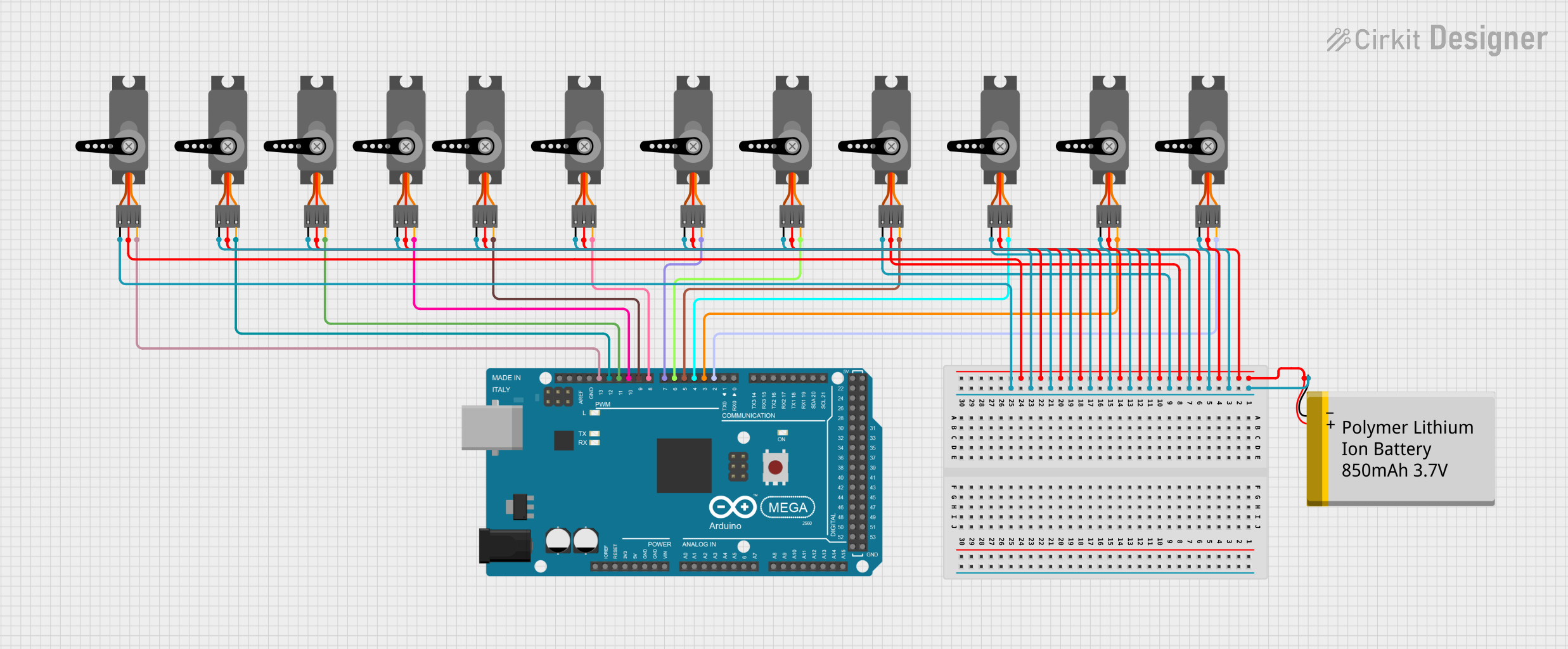
 Open Project in Cirkit Designer
Open Project in Cirkit Designer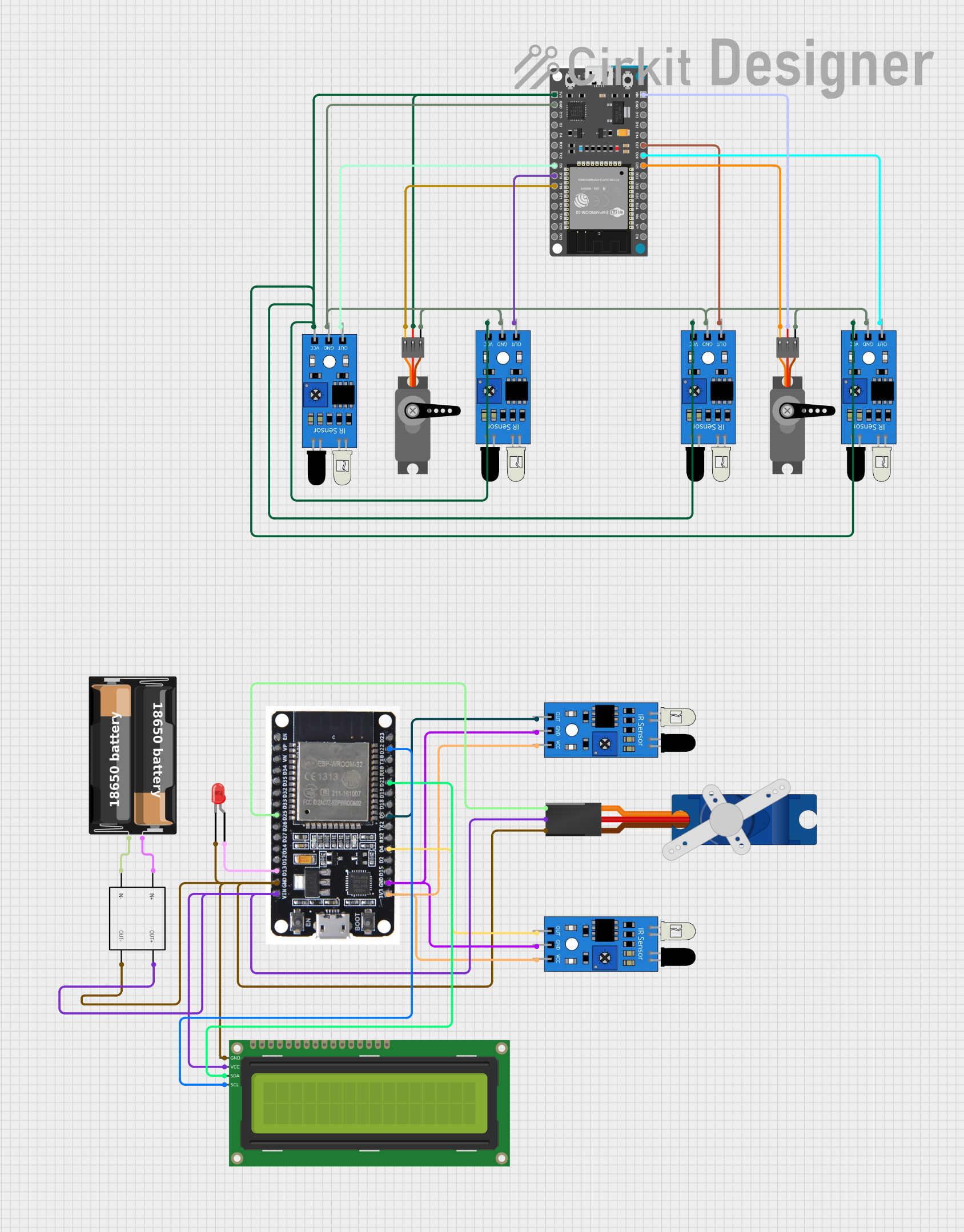
 Open Project in Cirkit Designer
Open Project in Cirkit DesignerExplore Projects Built with SERVO

 Open Project in Cirkit Designer
Open Project in Cirkit Designer
 Open Project in Cirkit Designer
Open Project in Cirkit Designer
 Open Project in Cirkit Designer
Open Project in Cirkit Designer
 Open Project in Cirkit Designer
Open Project in Cirkit DesignerCommon Applications and Use Cases
- Robotics: For controlling robotic arms, grippers, and joints.
- RC Vehicles: Steering and throttle control in remote-controlled cars, boats, and planes.
- Automation: Used in conveyor systems, pick-and-place machines, and other automated equipment.
- DIY Projects: Popular in hobbyist projects involving Arduino and Raspberry Pi.
- Camera Gimbals: For stabilizing and controlling camera angles.
Technical Specifications
Below are the general technical specifications for a standard hobby servo. Note that specifications may vary depending on the specific model and manufacturer.
Key Technical Details
- Operating Voltage: 4.8V to 6.0V (typical range)
- Current Draw: 10mA to 100mA (idle), up to 1A (under load)
- Torque: 1.5 kg-cm to 20 kg-cm (varies by model)
- Rotation Range: Typically 0° to 180° (some models support 360° continuous rotation)
- Control Signal: Pulse Width Modulation (PWM)
- Pulse width: 1ms (0°), 1.5ms (90°), 2ms (180°)
- Frequency: 50Hz (20ms period)
Pin Configuration and Descriptions
The servo typically has three wires for connection:
| Pin Name | Wire Color (Common) | Description |
|---|---|---|
| VCC | Red | Power supply (4.8V to 6.0V) |
| GND | Black/Brown | Ground |
| Signal | Yellow/White/Orange | PWM control signal |
Usage Instructions
How to Use the Servo in a Circuit
- Power the Servo: Connect the VCC pin to a 5V power source and the GND pin to ground. Ensure the power supply can handle the current draw of the servo, especially under load.
- Control Signal: Connect the Signal pin to a microcontroller (e.g., Arduino) or a dedicated servo controller. Use a PWM signal to control the servo's position.
- Position Control: Adjust the pulse width of the PWM signal to set the desired angle. For example:
- 1ms pulse width: 0° position
- 1.5ms pulse width: 90° position
- 2ms pulse width: 180° position
Important Considerations and Best Practices
- Power Supply: Use a separate power supply for the servo if it draws significant current, as powering it directly from a microcontroller may cause instability.
- Avoid Overloading: Do not exceed the torque rating of the servo to prevent damage.
- Signal Stability: Ensure the PWM signal is stable and within the specified frequency range (typically 50Hz).
- Mechanical Limits: Avoid forcing the servo beyond its physical rotation limits to prevent gear damage.
Example: Controlling a Servo with Arduino UNO
Below is an example code to control a servo using an Arduino UNO and the Servo library.
#include <Servo.h> // Include the Servo library
Servo myServo; // Create a Servo object
void setup() {
myServo.attach(9); // Attach the servo to pin 9 on the Arduino
}
void loop() {
myServo.write(0); // Move the servo to 0 degrees
delay(1000); // Wait for 1 second
myServo.write(90); // Move the servo to 90 degrees
delay(1000); // Wait for 1 second
myServo.write(180); // Move the servo to 180 degrees
delay(1000); // Wait for 1 second
}
Notes on the Code
- The
Servolibrary simplifies the process of generating PWM signals for servo control. - The
myServo.attach(9)function links the servo to pin 9 on the Arduino. - The
myServo.write(angle)function sets the servo to a specific angle (0° to 180°).
Troubleshooting and FAQs
Common Issues and Solutions
Servo Not Moving
- Cause: Insufficient power supply or incorrect wiring.
- Solution: Check the power source and ensure proper connections to VCC, GND, and Signal pins.
Jittery or Erratic Movement
- Cause: Unstable PWM signal or electrical noise.
- Solution: Use a decoupling capacitor across the power supply and ensure the PWM signal is stable.
Overheating
- Cause: Overloading the servo or running it continuously under high torque.
- Solution: Reduce the load or use a servo with a higher torque rating.
Limited Range of Motion
- Cause: Incorrect PWM signal range or mechanical obstruction.
- Solution: Verify the pulse width range and ensure there are no physical obstructions.
FAQs
Q: Can I control multiple servos with one Arduino?
A: Yes, you can control multiple servos using different PWM-capable pins. However, ensure the power supply can handle the combined current draw.
Q: Can a servo rotate continuously?
A: Standard servos have a limited range (typically 0° to 180°). For continuous rotation, use a continuous rotation servo, which interprets PWM signals as speed and direction rather than position.
Q: How do I know the torque rating of my servo?
A: Check the datasheet or product specifications provided by the manufacturer.
Q: Can I use a servo without a microcontroller?
A: Yes, you can use a dedicated servo tester or manually generate a PWM signal using a 555 timer circuit.
By following this documentation, you can effectively integrate and troubleshoot servos in your projects!